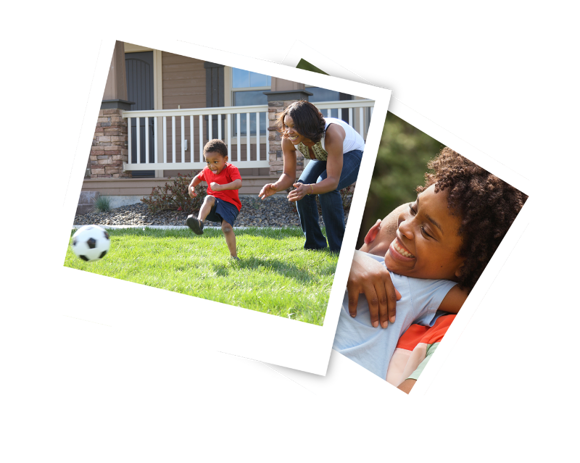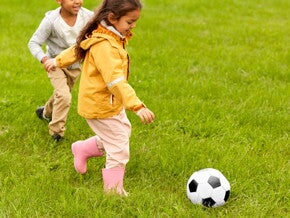
NESTLÉ® LACTOKID® 4

What makes NESTLÉ® LACTOKID® 4
the ideal choice?
Growing Up Happy starts in the tummy and grows from there. NESTLÉ® LACTOKID® 4
is a delicious and creamy drink for children aged 3-5 years containing a combination of
tummy-friendly ingredients, including L. reuteri culture.
NESTLÉ® LACTOKID® 4 is also a source of vitamins B, C, D and E, as well
as the minerals iodine and zinc.

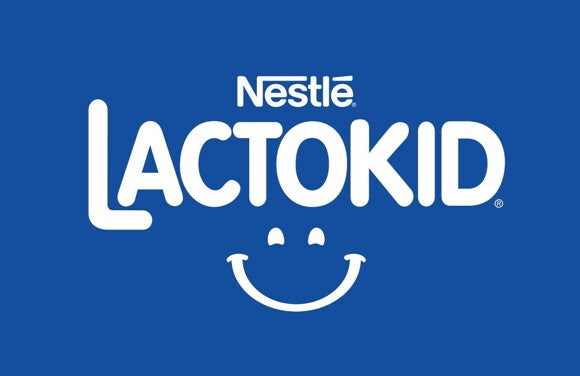
Happy Growth that starts with a healthy tummy
For the latest updates, articles and competitions join our Facebook page today.

Golden Hour

Introducing... my kitchen turned into a recording studio!

‘No’ means ‘No’

Now performing...Family sing-a-long!

Veggie stories? I’m all ears!
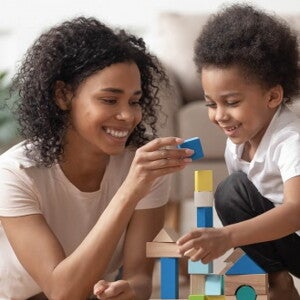
Architects of their own life

Let's get those little muscles moving!

Sorting fruit and veggies

Hey little DJ, turn that music on!

Ready or not, here I come!
Golden Hour
An e-mail here, an InstaStory there… coping in a fast-paced world means we get easily distracted and lose track of how much quality time we are spending with our kids.
If this sounds familiar, we suggest introducing our “golden hour” into your daily routine, where you set aside one hour of time, dedicating it to engaging with your little one, either through play or other activities. Switch your electronic devices off, forget about your work and try to relax and enjoy!
Did you know that spending quality time with your little one can strengthen your relationship while stimulating their emotional, language, social, cognitive and motor skills? Finding or scheduling a golden hour in your day may be challenging, but it will mean so much to your child. A little effort from you can go a long way
By introducing this dedicated time for your child daily, you will create a space for precious quality moments. So… phones off. Let’s turn Play Mode on!
Let your child choose what they want to play or do and encourage their choice.
Try to promote physical activity and outdoor play as much as possible to stimulate physical and cognitive development.
Talk to your little one while you are playing to stimulate language development.
And as always, show your love, be attentive and responsive.
Remember everything starts in the tummy…when they feel right, they can enjoy growing up happy
Introducing... my kitchen turned into a recording studio!
Learning does not always come from a book or a teacher… it also comes from exploration. Your little one can learn a lot about sounds and shapes from any safe household items that you can find in your kitchen… time to shine light on that old frying pan hiding at the back of your cupboard!
Learning through exploration and play is crucial for healthy development – a building block for a happy childhood and later a happy, creative life. Here are our tips to encourage them:
- Give your little one everyday household items in different shapes (pots, dishes, carton boxes, wooden
spoons), textures and materials. - Make sure the objects are safe (no sharp edges, fragile or dirty objects).
- Let them discover the sounds different objects make when you hit them.
- To make it more fun, invite the entire family to join in!
‘No’ means ‘No’
At times you might find it hard to find the right balance between being fun and implementing limits and boundaries. Even though you love your child unconditionally, discipline is necessary for your little one’s stable growth.
Your child needs rules and boundaries to feel safe and secure and it also helps them learn to manage different situations. A warm and supportive environment, with clear rules and boundaries fosters happy and healthy growth
While you know that establishing and maintaining rules at home is important, it is often challenging to say ‘No’ and remain consistent… so here are a few tips to make it easier:
- Keep it simple. Too many rules are confusing for the whole family.
- Set a few clear, realistic rules and respect them yourself.
- For example: no sugar after brushing teeth; we all eat at the table; we don’t raise our voices at each other.
- Repeat to your little one that you love them unconditionally, but rules must be respected.
- Remain consistent, no matter how challenging it might be (no means NO and stays NO – be strong!).
- Explain in a simple way the WHY of every rule or decision you make. With time this will help your child understand
Remember everything starts in the tummy…when they feel right, they can enjoy growing up happy!
Now performing...Family sing-a-long!
Whether you’re a karaoke master or just love singing in the shower, it is time to share your love for singing with your child! Singing songs is not only a great way to teach them about tone, beat and rhythm; it is also great for family bonding and just feels good.
Singing together strengthens your relationship and stimulates your child’s emotional, social, cognitive and language development. It also stimulates the well-being and happiness of the whole family.
Our tips to prepare for this great moment:
- Choose the favourite songs of each family member (including your child’s).
- Use different occasions to sing your favourite songs: while walking in nature, driving in the car, or simply sitting in your living room.
- Do it even if you are not a great singer! It is all about having fun and laughing about it.
- Do not forget to praise everyone – including your little one – for their singing efforts.
- Make it an enjoyable family moment, and maybe it’ll become a routine.
Remember everything starts in the tummy…when they feel right, they can enjoy growing up happy!
Veggie stories? I’m all ears!
Do you know how superheroes are made? Just add Super, Mr. or Ms. to any vegetable name and there you go! A great new story to tell your child to make them love veggies! You’re not the only parent worrying about your child not eating vegetables. Most parents do. And while it’s not easy to get your little one to start enjoying their veggies, it’s not impossible either.
Telling your little one exciting stories about “unpopular foods” like veggies will allow the child to become familiar with them, and it increases the likelihood of your child accepting and eating them.
So, let’s take it one step at a time to cleverly make them love veggies… for life we hope:
- Invent an exciting story where the superhero character loves vegetables. The character could be a cartoon, an animal or a real person.
- Conjure up some adventures the superhero goes on: include activities that your child enjoys e.g. kicking a ball, swimming or playing with a sibling.
- End the story with the superhero enjoying his vegetables… having a second helping too! When the superhero is hungry, he washes his hands, sits at the table and eats his healthy meal with LOTS of veggies (the ones your child refuses to eat).
Remember everything starts in the tummy…when they feel right, they can enjoy growing up happy!
Architects of their own life
Today on the playing program: building blocks! There are no limits to their imagination. Let your little one play with building blocks or stackable objects… they will be soon be showing you their engineering skills
Did you know that these types of games boost creativity and provide a better understanding of structure and spatial dimensions? Who knew these games were so helpful!
Keep in mind:
- Give them stackable objects such as blocks or boxes.
- Show interest in what they have built and engage in spatial talk. Describe their creation with words such as tall, short, circle, rectangle, round, straight, inside, outside or middle.
End of the story? Don’t think so! Time to tear down those walls! Knocking the creation down is just as much fun as building it and teaches consequences of actions.
Exaggerate your expressions when they look at you, searching for a reaction. No matter if you feel startled, angry, surprised or happy, the point is to let them know the effects of their actions.
A few points to keep everyone happy:
- Avoid letting your child “tear-down” playing games with older siblings while they are building something. This could create tension.
- Bear in mind that knocking down a construction is not a destructive quality, it’s simply an inherent need to learn how objects behave in space.
Remember everything starts in the tummy…when they feel right, they can enjoy growing up happy!
Let's get those little muscles moving!
Whether you are chasing the family’s puppy, leading an intergalactic mission or running races, encourage your child to be physically active. Anywhere is the best playground!
Physical play has a positive impact on your little one’s development and it has a positive impact on their self-esteem, mood, well-being and happy growth…
- There’s a world of possibilities to stay active: games, sports, dancing, hiking and outdoor playing. These activities will have a beneficial impact on your mood too, Mom!
- Would you like to motivate your child further? Let them choose either a game, sport or an activity they already enjoy, even if this is something that they already do all the time.
- Set a good example for your child to follow. Initiate physical play or join in their physical play even if the activity is not what you normally like
- Be encouraging even if your child is not proficient at the activity.
Remember everything starts in the tummy…when they feel right, they can enjoy growing up happy!
Sorting fruit and veggies
Let them distinguish and categorise shapes, sizes, colours and textures using fruit and veggies. Watch your child’s fascination as they sort them, or even create images out of them. Have fun with descriptions as they discover the bumps on a mielie, practice peeling a naartjie or even taste a lemon.
Playing with fruit and veggies in this way helps them understand categorisation which is good for their memory, language development and Happy Growth!
You could perk up their interest by slicing some of the fruit and veggies into different shapes, such as a long thin cucumber which becomes circles when sliced.
There are no rules: Put out a range of fruit and vegetables and explore the many ways you and your child can describe and sort them.
Remember everything starts in the tummy…when they feel right, they can enjoy growing up happy!
Hey little DJ, turn that music on!
While musical tastes might differ - daddy listening to a good rock concert and mommy listening to her jazz, music plays a central part in everyone’s life and culture… and especially for your child. The super combo of music and dance has great benefits! So, turn on the radio and invite the family to join the party!
Playing music strengthens the bond between yourself, your child and your family members. It also stimulates your little one’s emotional, social and motor skills, thus boosting their well-being and happy growth!
There are many ways to ignite your child’s musical appreciation:
- Play different kinds of music – everyone in the family can contribute with their favourite playlist!
- Pay attention to the music that your little one likes and play it often.
- Repeat the movements that your child makes and exaggerate them.
- Make it fun, sing loudly, move and laugh a lot.
- These can be fun family moments to remember forever so invite the whole family to join. The more, the merrier!
Remember everything starts in the tummy…when they feel right, they can enjoy growing up happy!
Ready or not, here I come!
Hide-and-seek is a popular game among children… and some elders too, right dad? Hiding games are a joyful way to help your little one develop their cognitive skills and gain a better understanding of their environment.
It teaches them how to regulate their emotions and develops social expectations – essential for happy and healthy development. Interesting, huh?
Here are some basics for you and your child to become the champions of good play:
- Set a few safety rules such as the hiding area – especially if playing outdoors – and any out-of-bounds areas.
- The “seeker” covers their eyes and begins counting while the others hide. Keep the counting number to one your child is comfortable with at their age.
- The best part: The seeker yells “Ready or not, here I come!”
- Try not to giggle in your hiding spot.
- The player who gets found first is the counter for the next round, but this can be changed to give everyone a turn to be the seeker.
Remember everything starts in the tummy…when they feel right, they can enjoy growing up happy!
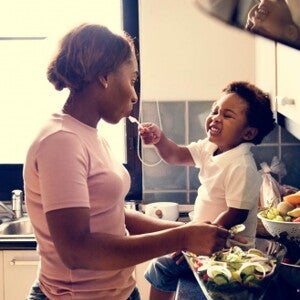
On the way to Master Chef

Big chair for a little one

Once upon a time...
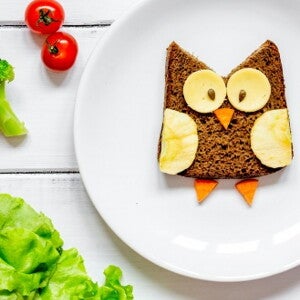
Veggie art Masterclass
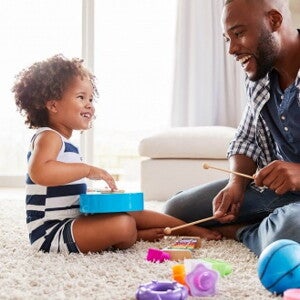
When it's playtime, they are the boss!
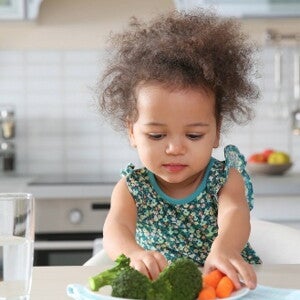
Let them choose what they want to eat...as long as it's the good stuff!

Treasure box for children: all home-made!

A teddy bears picnic

Hello? A little attention here please!

Time to sleep:bedtime routines
On the way to Master Chef
Cooking can be so much fun for a child… and what a playful way to introduce ingredients to your little one! They can use them and make a dish of their own – woah! – and to learn a healthy approach to food. Who knows, the result might even be scrumptious! They may also discover a new passion and maybe even a future profession!
Cooking or baking together is a fun bonding activity that helps your child to get familiar with new foods. Little ones are also more likely to taste meals that they have proudly created themselves. Establishing healthy eating habits and a strong bond and trust with your little one is essential for their healthy and happy growth.
A few tips on cooking with your kid:
- Choose very simple and fast recipes (at their age, patience is not a child’s strength).
- When possible, go together to shop for ingredients or pick them from the garden.
- Let your kid choose what goes on the plate (healthy options).
- Use this time together to engage verbally: explain what you are doing and why.
- Remember to praise them for a good job and for helping you.
- Enjoy a family dinner together at the family table.
- Show how you, and the whole family, enjoy the meal – let me hear that ‘yummy’!
The next step is Master Chef!
Remember everything starts in the tummy…when they feel right, they can enjoy growing up happy!
Big chair for a little one
Your child is a new member in the family club, and they deserve their place at the table too! Your little one means the world to you and having them at the dining table during a meal is yet another way to make them feel included.
Enjoying a family meal together increases the likelihood of a child accepting and trying new foods. It’s a simple and effective way to stimulate social and emotional development. Not only is it quality time for the entire family, but it’s good for the family’s happiness too (especially your little one).
It It’s best to try and establish as many occasions as possible (several per week) when the entire family sits together at the table to share a meal and chat
A few tips:
- Install your child’s “high chair” at the table, whether it’s a booster seat on one of the dining chairs or a taller chair.
- Let them taste the food, smell it, squish it between their fingers and smear it on their face. It’s all part of the adventure!
- It’s important that you show how much you and the rest of the family enjoy the food.
- A little praise goes a long way too… it’s also necessary to praise them when they taste new food or enjoy what they eat.
- Be patient and tolerant! Sure, the meal could be a messy affair. But be patient and tolerant; we promise it is all worth it!
Remember everything starts in the tummy…when they feel right, they can enjoy growing up happy!
Once upon a time...
Build a blanket fort with cosy blankets and snuggle in it with your child… It’s story-time! Reading picture books together has plenty of benefits for your little one but letting them choose the picture book and which page to start on is even more beneficial.
Discovering the visual universe of books can work wonders: from long-term emotional and cognitive benefits, developing focus and concentration to stimulating language development, thereby ensuring happy and healthy growth.
Here are some steps to introduce reading as a fun activity:
- Look at picture books together.
- Point at things and name them.
- Look out for what they’re interested in and talk about it, providing more information.
- Play games, animate your face and make gestures. Do your best animal impressions, they will love it!
- They might want to start “reading” from the last page, because there is something at the very end. Don’t stop them; in fact, give in to their demands.
- Choose a picture book over an electronic screen. The shared, interpersonal experience between you and your little one is so much better without a screen.
- When they are older and their ability for visual imagination evolves, they’ll be able to follow a story without needing the pictures, although they’ll still enjoy looking at them.
- Change it up as some children enjoy free storytelling while others like the predictability of hearing a story read out loud.
Remember everything starts in the tummy…when they feel right, they can enjoy growing up happy!
Veggie art Masterclass
Picky eating… breathe, it‘s just a phase that your child is going through.
Fortunately, there are fun ways to encourage your little one to get all the nutrients they need. One of the best tricks is to transform their less-favourite ingredients into a lion, car, flower or anything that you and your child can imagine… with safe tools of course!
Creating fun images can increase the likelihood of your child tasting new foods. Establishing good eating habits is essential for balanced and happy growth... and for the sake of your mental health. Try not to get stressed if your child refuses a food, just try again another day.
Grab a pen mom, here a few tips to pass this phase with honours:
- Encourage your little one to taste it, but never pressure them to eat.
- Let them look at it, squish and smell it.
- Offer them the same food several times even if they keep refusing it. They need time to become familiar with new food. Remember everything starts in the tummy… when they feel right, they can enjoy growing up happy!
- Try varying cooking methods, textures and presentations.
- Remember to praise your little one when they agree to taste a food… but do not reward with sweets.
- Have structured family meals, with as few distractions as possible so you can reconnect and enjoy the conversation.
- Show how you, and the whole family, enjoy the food. Yum!
- Be patient with them, remember we all passed this phase.
Remember everything starts in the tummy…when they feel right, they can enjoy growing up happy!
When it's playtime, they are the boss!
At this age, around 3–5 years, your child should be the boss of one thing: playing! Give your child the choice of what to play. After all, they are the one exploring the world, so let them do it in their own way!
We might not realise it, but making their own decisions is a big milestone in a your little one’s journey. Giving them total autonomy to choose will help to develop their identity and support healthy and happy growth.
The first step to help your child discover the world around them is to give them plenty of play time… A full-time dream job!
- Rather than showing them how to play, let them discover their own way!
- Pay attention to what they show an interest in. To fully fuel their creativity, give them suitable objects or toys to increase this interest.
- Every time they achieve something, turn it into an opportunity to praise them!
- Encourage them verbally. Use phrases such as: “You’re building such a great house! So nice and cosy” or “Who is going to live in your house?” This will build their self-esteem and confidence in a constructive way
Remember everything starts in the tummy…when they feel right, they can enjoy growing up happy!
Let them choose what they want to eat...as long as it's the good stuff!
Tonight, let them decide what is on the menu and little by little, you will be helping them develop their personality! Not to mention, that all the options you are giving are healthy, one way or another!
Decision-making is a big milestone in your little one’s journey and by giving them the freedom of choice, you’re helping them develop their personality and supporting their balanced and happy growth.
Here’s a fail-proof way to make sure your child has at least one good food a day.
- Ask them if they’d like broccoli OR carrots along with their potatoes for dinner. Now that’s a pretty difficult choice for someone who isn’t a big fan of vegetables!
- But they can’t say “none”. They must choose one.
- You could also take them along when you go shopping and let them choose vegetables that they would like to have for dinner. Once they decide which ones to pick, they can’t change their mind about eating them at dinner.
- By providing your child a choice between several options (while making sure they’re all healthy), you increase the likelihood of them accepting the one they chose.
Remember everything starts in the tummy…when they feel right, they can enjoy growing up happy!
Treasure box for children: all home-made!
Mom, did you know that your house is full of hidden treasures in plain sight? A treasure box can contain a spatula, box, whisk, roll of paper or something as simple as plastic cups. It may come as a surprise to you, but a box full of household items is a goldmine for young children. Any safe item at home represents a potential for discovery and a great opportunity to learn something new.
If you notice that your TV remote control is missing, just smile and enjoy this as part of the fun experience of growing up. Unstructured play is very important, because it stimulates their creativity, learning and decision-making skills.
Now let us dig into it a bit more:
- No need to show them how to play with items in the treasure box, they gain more joy from discovering it in their own way.
- There is no deadline to meet nor plane to catch. Give them all the time they need to enjoy and learn. After all, in this way they will discover their own way to see the world
- Go further! Add a bit of verbal encouragement such as “So, you’re talking on the phone! Are you talking to Gogo?” or “Aha…you’re cleaning the floor!Thanks for helping me”
Remember everything starts in the tummy…when they feel right, they can enjoy growing up happy!
A teddy bears picnic
Include your little one in planning a surprise Teddy Bear’s picnic and watch how their planning and preparations build into great excitement and reward.
Mom, dad, planning a surprise together is a fun, bonding activity that helps your little one experience the pleasure that comes from selflessly giving to others. Numerous studies have shown that giving to others puts a smile on the face and happiness in the heart.
The picnic can take place either indoors or outside. All you need is…
- Your child’s Teddy Bear/s
- A big blanket and some pillows.
- Stuffed animals to enjoy in Teddy’s surprise picnic
- Some yummy, and fun food that Teddy (your child) likes to eat
- Simple activities that your child will engage in
- Books – for a short story time after eating
Remember everything starts in the tummy…when they feel right, they can enjoy growing up happy!
Hello? A little attention here please!
It is not easy. The world expects you to have the time for everything. However, it is important to find and dedicate some time to your little one. Being attentive and responsive, even when you are busy managing daily obligations, is key for a little one’s happiness, ensuring their healthy growth and a bright future!
As a matter of fact, by paying full attention to them you will foster trust in your relationship. The result? They will realise that they can rely on you no matter what and you’ll become the best mommy ever!
Whether you’re on the phone with your best friend or working from home, try to take a pause when your child approaches. Pay full attention to them while they show you their amazing outfit or tell you about their new game. That moment will mean the world to them.
Remember everything starts in the tummy…when they feel right, they can enjoy growing up happy!
Time to sleep:bedtime routines
They love having mom and dad’s undivided attention. A bedtime routine reassures your child of your affection and attention. While the activity does not matter – a family toothbrush party, reading a story under the blankets by torch-light or singing everything you say – it is important that you stick to a similar day-to-day routine, so your child knows the drill.
Bedtime routines go a long way in stimulating your child’s language skills and cognitive functions, and at the same time helps kids fall asleep or wake up more easily. It strengthens the bond between you, builds emotions and increases their happiness.
Did you know that research shows that doing the same activities, in the same order, at the same time every day and night, will help your little one fall asleep more easily, wake up less during the night, and sleep for longer! It is as “simple” as that.
Here’s a bedtime checklist to make their life easier (and yours too):
- Start your bedtime routine before your child gets overtired, fussy or cranky. It will be harder to get them to sleep if they are irritable.
- Gradually adapt your bedtime routine as they grow older, for example, reading a bedtime story instead of singing a lullaby.
- Avoid electronic devices in the bedroom. They could be distracting. Your child will relax so much better at the sound of your voice and you can enjoy the quiet, quality time together.
Remember everything starts in the tummy…when they feel right, they can enjoy growing up happy!

What the poop!

“Mom, my tummy hurts!” – Lactose intolerance in children

Tuning into others: your child & theory of mind

Magical mealtimes
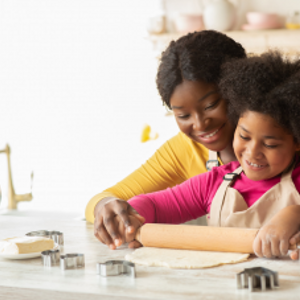
Baking memories

The Sound of Happiness

Life is Happier with a Sense of Humour

Building Resilience with Humour

Getting into the Sleep Habit

Get them Giggling!
What the poop!
Constipation during potty training in young children
Just when you thought your child was making friends with their potty, they’ve suddenly become afraid to sit on it. The last time they tried to poop, it hurt and they’ve decided that the potty is to blame! It’s become a vicious circle – the more it hurts to poop, the more they hold back, the harder the poop gets, and the more it hurts to go.1
Poor little love. No wonder they’re tired and cranky. Keep reading to find out what can you do to ease their fears and get things back on track.
Constipation and happy growth
Constipation is very common in young children who are changing to a new diet and starting toilet training. In most cases, it’s nothing to be concerned about and it will resolve itself quickly once your child is happy and secure that having a poop won’t hurt.1 With a few dietary changes, a little exercise and some gentle toilet training techniques, things will soon be on the move again. There’ll be an end to the potty patrol, and you can move on to more pleasant dinner conversation!
Get things moving2
- Ensure they are drinking enough water2
- Probiotics such as L. reuteri have been shown to increase the number of weekly bowel movements and help soften stools2–4
- Ensure they are getting the right amount of fibre to help make their poops softer – try oats, apples (with the peel) and whole grains 1,2,5
- Encourage them to exercise with plenty of walks2
- Create a toilet routine. Encourage them to take their time on the toilet after meals and use a stool to provide leg support if you’re not using a potty. 1,2
Remember, everything starts in the tummy and grows from there... when they feel right, they can enjoy all the ways of Growing Up Happy.
IMPORTANT NOTICE. NESTLÉ® LACTOKID® 4 is not a breastmilk substitute, and is formulated to support the changing nutrition needs of healthy young children older than 3 years.
“Mom, my tummy hurts!” – Lactose intolerance in children
Your 3 to 5 year old is having regular tummy troubles and you wonder what is going on. Every time they have their favourite ice cream, they have tummy cramps, smelly bottom burps and diarrhoea or constipation. Their stomach has also been gurgling a lot lately as if it’s trying to tell you something!
You’ve heard about and read up on lactose intolerance – could this be what they have or is it a more serious health condition? Should you cut dairy out of their diet to see if things improve or wait until you’ve had a proper diagnosis? Here’s what you need to know about lactose.
What is lactose?
Lactose is the main sugar present in both human and cow’s milk. It is an important source of energy and a “good“ sugar for your child. In infants, it’s the most important source of energy, providing almost half of the total energy they need to grow.1
In order to release its energy, lactose needs to be broken down in the small intestine by an enzyme called lactase. In general, the amount of lactase produced by the body naturally decreases with age. This begins very gradually after weaning reaching 70–80 % of the adult population.1
A deficiency of the lactase enzyme from birth is extremely rare, and you would have spotted the signs a long time ago even if your child was breastfed, as human milk contains more lactose than cow’s milk (7 vs 5 g of lactose/100 ml).1
Lactose and happy growth
Lactose is an important source of energy and a “good” sugar for your child. Milk and other dairy products have a high nutritional value and calcium is crucial for bone health, so don’t cut out dairy unless you have to. In the unlikely event that your child is lactose intolerant it may feel like a lot to deal with, but it is not a serious issue and manageable with a few simple changes to their diet. It’s also an opportunity to teach your child how much good nutrition matters.1
If you think your child may be lactose intolerant
- Keep a food diary to spot any food patterns and symptoms – pay attention to whether there is any difference with and without dairy foods
- Read the ingredients labels on food products to see if they contain large amounts of lactose or dairy
- Consult your doctor if you think your child is lactose intolerant
Remember, everything starts in the tummy and grows from there... when they feel right, they can enjoy all the ways of Growing Up Happy.
IMPORTANT NOTICE. NESTLÉ® LACTOKID® 4 is not a breastmilk substitute, and is formulated to support the changing nutrition needs of healthy young children older than 3 years.
Tuning into others: your child & theory of mind
The other day you took your little one out shopping to choose a present for daddy’s birthday and asked her what she thought he might like. She pointed to the princess dolly she’s been eyeing up for a while and said, “this one!”, clapping her hands together gleefully.
In her mind, the dolly is a perfect gift for daddy, if she loves it then he will too. So you tried to explain that perhaps daddy would prefer a mug with his name on it or how about some Daddy Dinosaur socks instead – he’d love these? But she was still keen to get him the doll. You’re curious to know how your child sees the world at this age. When she will become aware that other people don’t necessarily share her feelings, thoughts and wishes?
Theory of mind and happy growth
Developing “theory of mind” is an exciting stage in your child’s development which happens gradually between three and five. They are starting to understand other people’s thoughts, feelings and actions as well as their own.1 Try the simple tests to work out whether your child has “theory of mind” yet and then help them to develop it with pretend play and story time. As always, play is key to happy growth.
3 ways to tell if your child has “theory of mind"
 | 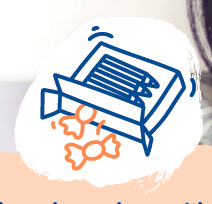 | Show your child a box with painted crayons on it and ask them what they think is inside. When they make a guess that it has crayons inside show them the box contains sweets. Close the box and ask them what their friend would think was inside. While a three-year-old will typically say that their friend thinks there’s sweets inside the box, a five-year-old will give you the correct answer. |
 |  | With the help of two dolls, tell your child the following story: “Max puts his chocolate in a box and goes off to play. While he’s away and can’t see what his friend is doing, he takes the chocolate out of the box and hides it under a towel. Then Max comes back. Where will he look for his chocolate?” While a three-year-old thinks that Max will look for chocolate under the towel, a five-year-old will give you the right answer. |
 |  | Another sign that your child is starting to develop “theory of mind” is when they show signs of so-called ”social” emotions, such as embarrassment or shame For example, your child Is hiding their face or looking away when they realise they have done something wrong. Such emotions require a basic understanding of other people’s thoughts and feelings. |
4 ways to help your child develop “theory of mind”
- Talk about your child’s thoughts and feelings as well as about your own thoughts and feelings. You can teach your child to put her feelings into words and think about why they happen by talking about them.
- Be responsive to their social observations. You can help your child to understand other people’s perspectives by being responsive to their social observations and answering any questions they might have.
- Pretend play. This is a great way of teaching your child how to see things from other people’s perspectives. You can play along by helping your child to take the role of mum or dad. Your child could pretend to be sad and worried because their dog is sick. You can play along by helping them take the dog to the vet, who is concerned and comforting. The vet treats the dog, the dog gets better, and the owner is happy and grateful.
- Look at picture books with your child and tell them stories. Talk about the characters’ thoughts and feelings, what they want to do and why. Also, try to link the story with your child’s own experiences.
Remember, everything starts in the tummy and grows from there... when they feel right, they can enjoy all the ways of Growing Up Happy.
IMPORTANT NOTICE. NESTLÉ® LACTOKID® 4 is not a breastmilk substitute, and is formulated to support the changing nutrition needs of healthy young children older than 3 years.
Magical mealtimes
Eating together is one of the most important things you can do with your child. Family meals give structure, an opportunity to model healthy eating, and set eating patterns that will hopefully continue throughout your child’s life – the building blocks for happy growth. It’s not easy to eat together as a family every day but try and make family meals a priority. Keep it simple menu-wise and let your child help with the food preparation.
A warm atmosphere, positive conversation and being attentive to your child are just as important as what’s on the plate! Sharing small moments from the day helps create stronger connections away from the table.
Family meals for happy growth
Numerous studies have explored the link between the frequency of family meals and diet quality. Shared family meals three or more times per week, were more likely to result in healthier diets and eating patterns. Families were less likely to eat unhealthy foods such as sodas, fast foods and fried foods. They were also more likely to eat fruit and vegetables, as well as breakfast. This behaviour meant that children were less likely to be overweight and have eating disorders in adolescence compared to those who shared fewer than three family meals per week together.2
Such huge benefits to be had from the humble family meal! Although much of the research to date involved older children, new studies on pre-school and school-aged children are showing similar patterns, which is good news. It means you can do something positive now that will impact your child’s quality of life, health and wellbeing for many years to come.3
Family mealtime tips
- Try to set regular mealtimes for your child. Pre-schoolers may need to eat around five times a day, so spread out these eating occasions across the day.
- Have your child eat in the same place e.g. at the dining or kitchen table.
- Try and have at least one meal together as a family per day, where everyone is offered the same foods. It will give you the opportunity to model healthy eating choices.
- Use mealtimes as an opportunity to chat with your child, not just about the food, but also about their day.
Remember, everything starts in the tummy and grows from there... when they feel right, they can enjoy all the ways of Growing Up Happy.
IMPORTANT NOTICE. NESTLÉ® LACTOKID® 4 is not a breastmilk substitute, and is formulated to support the changing nutrition needs of healthy young children older than 3 years.
Baking memories
A simple and fun way to get your child to eat more healthily is to involve them in the food preparation process and enjoy cooking together.1 Children are far more likely to try something they have helped to make. They are curious about the world and keen to learn how things work, so use this to your advantage. Be a role model and help your child to learn about healthy eating.
Cooking together is fun for boys and girls. It will teach your child important skills that will set them up for a lifetime of healthy, adventurous eating. It produces a tangible product – a meal – that your child can be proud of. It creates lots of positive associations – it was fun to make and something they did with you, creating memories.
Relax and enjoy cooking together
Kiddies are never too young to turn their hand to cooking. After all, they are already experts at making play dough ice creams and mud pies in the sand. There are plenty of simple activities that can be delegated to little helpers (with your supervision, of course):
Jobs for small hands
- Washing fruits and vegetables
- Helping to measure out ingredients with cups or scales
- Knife-free fruit & vegetable preparation
- Mixing ingredients with a spoon
- Scrambling eggs
- Adding toppings to a salad or pizza
- Kneading or rolling dough
- Wrapping dumplings
- Brushing marinade on meat or vegetables
Remember, everything starts in the tummy and grows from there... when they feel right, they can enjoy all the ways of Growing Up Happy.
IMPORTANT NOTICE. NESTLÉ® LACTOKID® 4 is not a breastmilk substitute, and is formulated to support the changing nutrition needs of healthy young children older than 3 years.
The Sound of Happiness
Your family is spending some time together, and Dad starts telling stories. He’s noticed that the more absurd the story, the more laughs erupt from the kids. He tells a story of the time he escaped from a leopard by climbing up a tree. In the process his pants ripped on a branch and the leopard could see his underwear. The leopard started laughing at this sight and took out his cellphone to tell his friends. Soon the whole family is in peals of laughter, the kids are laughing at the story, while the adults are laughing at the reaction from the kids. Everyone’s tummy muscles and cheeks hurt from laughing, but everyone is feeling happy!
A laughing child has to be one of the most beautiful sounds and one of life’s greatest joys. Laughter is a powerful, universal language. It is also good for one’s physical and mental health. Here are some very good reasons to laugh:
- Laughing feels good. It reduces anxiety and decreases stress hormones.
- Laughing is good for your lungs. It has been shown to increase the number of breaths one takes, increases muscle activity and makes one take deeper breaths, forcing more air in and out of the lungs.
- Laughing is good for your physical health. Emotions can have a powerful effect on one’s health. Laughing changes your heart rate, blood pressure, sweating, sleep patterns and even bowel movements.
- Laughter can promote learning. In a classroom situation, humour can make one feel more comfortable, interested in the subject and motivated to learn.
- Laughing can help you cope. Being able to see the funny side of stressful situations or silly mistakes can ease uncomfortable feelings.
- Laughing builds relationships. When one person laughs, others start laughing too. People that laugh are nice to be around. When a good laugh is shared with friends or family, it brings them closer together.
Life truly is better when you’re laughing, so help your child see the funny side of life and enjoy the sound of their happiness.
Remember, everything starts in the tummy and grows from there... when they feel good, they can enjoy all the ways of Growing Up Happy.
IMPORTANT NOTICE. NESTLÉ® LACTOKID® 4 is not a breastmilk substitute, and is formulated to support the changing needs of healthy young children older than 3 years.
Life is Happier with a Sense of Humour
Your little one’s giggles are just precious. What’s even more precious are the things they find funny. A joke in which a cow says “oink” instead of “moo”, for example, or one of their favourites… bodily functions.
Whatever the source, humour is when something is funny. A sense of humour is being able to recognise the humour.
A sense of humour is something children can learn and can be a very useful skill in life. It can strengthen relationships, bring people together, reduce tension and even help one to manage conflict in a socially acceptable way. A sense of humour also helps children be more optimistic, have higher self-esteem and cope with the ups and downs of life.
Three ways to encourage your child’s sense of humour:
- Be playful
Be a role model. Make jokes, be silly, tell funny stories, laugh and make light of minor mishaps such as spilling milk. Be spontaneous and be game when the joke’s on you. - Encourage humour
Laugh at your child’s jokes or attempts to be funny, whether they are funny or not. The only times you won’t laugh with them, is if their jokes are hurtful to others. If this happens, explain why their joke is not funny. - Humour-rich environment
Get funny picture books or nonsense rhymes that you can enjoy with them and find age-appropriate TV shows or movies that are funny.
Have some fun, laugh and joke with your kids. It’s good for their development and their happiness.
Remember, everything starts in the tummy and grows from there... when they feel good, they can enjoy all the ways of Growing Up Happy.
IMPORTANT NOTICE. NESTLÉ® LACTOKID® 4 is not a breastmilk substitute, and is formulated to support the changing needs of healthy young children older than 3 years.
Building Resilience with Humour
Your preschooler is ignoring your requests to pick up their toys. You may feel like yelling at them, but you know that’s not going to be productive. Instead, you pretend to be a robot! You March around awkwardly & use a "robot" voice to ask your child to pick up their toys. Suddenly you have your little one’s attention, you’re both giggling and together you start picking up the toys. You have just shown your child that humour can be a useful life skill.
You can’t control the stress your child will face in their life, but you can teach them ways to deal with it. One way is to use humour as a coping mechanism. People who can see the funny side of a problem tend to cope better. This is because laughter decreases levels of stress hormones, providing a bit of relief. When we feel better, we are able to bounce back when things go wrong and grow from our experiences.
Ways to encourage humour in children
- Build their confidence by appreciating their humour at home.
- Help them understand others’ feelings. For humour to be effective, one needs to understand the mood and perspective of others.
- Use humour yourself. Tease yourself when you make a mistake and use humour to diffuse tense situations between you and your child.
- Share funny stories with your child.
- Be patient with their jokes, especially during the potty humour stage.
- Use humour to encourage your child to do something you’ve asked. This could be making funny rhymes with their name to get their attention or making a joke about their toys which are about to get up to serious mischief in the house if they are not gathered up and put in their place.
- Teach them when humour is offensive and when it is funny.
If used correctly, humour can make a person more resilient to life’s struggles and lead a happier life.
Remember, everything starts in the tummy and grows from there... when they feel good, they can enjoy all the ways of Growing Up Happy.
IMPORTANT NOTICE. NESTLÉ® LACTOKID® 4 is not a breastmilk substitute, and is formulated to support the changing needs of healthy young children older than 3 years.
Getting into the Sleep Habit
Having a healthy sleep environment is crucial for your child. It helps them wind down, relax, and go to sleep when they get into bed.
WHY GOOD SLEEP HABITS ARE KEY to Grow Happy
- Builds a healthy body
Sleep helps with healthy growth patterns, body weight and eating habits. Your child will have a lower risk of obesity if they get enough sleep. - Contributes to mental wellbeing
Your child will have better concentration, be more alert, able to focus on tasks and be in a better mood if they get enough sleep. - Creates a calm sanctuary
A good sleep environment helps reduce stress and makes the bedroom a relaxing place for your child to sleep in. They will look forward to going to bed and feel safe and secure with a regular bedtime routine.
Bedtime Habits for Better Sleep
Kids love taking their favourite toys to bed – including hard robots, toy cars, and other toys that don’t seem very cuddly! When these are electronic devices, it can lead to less sleep, since your child can keep playing on them in the dark, unlike a soft toy or a book, which also goes to “sleep” after lights out.
It may be difficult to remove electronics such as the TV from the bedroom if you share a room and don’t have another space for them. If this is the case, be a good role model and don’t use electronics after your child’s bedtime to avoid disturbing them. They learn from you, so see this as an opportunity to teach them some healthy habits around the use of technology at bedtime.
Also, make sure that your child doesn’t play or watch anything stressful or scary before bedtime, such as action movies or ghost stories, so they don’t have trouble winding down. Even having a TV in the bedroom is associated with more nightmares in children, something to bear in mind if you share a room.
Healthy Sleep Time Habits
- Happy tummy. The bedtime routine could start with a healthy snack, since a hungry child will struggle to sleep. Just make sure that any snacks get eaten at the start of the bedtime routine.
- Get clean. A bath and brushing teeth not only teaches personal hygiene habits, but also helps with sleep. A bath increases one’s body temperature, followed by a drop in body temperature, making one feel sleepy. Brushing teeth prevents painful dental caries, which do not make for good sleep.
- Sing lullabies or read books. These activities contribute to positive parent-child relations, benefits the child’s language, literacy and cognitive development, and also helps with relaxation.
- Snuggle up. Physical contact such as massage or cuddles help with good mood, parent-child bonding and better sleep.
Sweet dreams.
Remember, everything starts in the tummy and grows from there... when they feel good, they can enjoy all the ways of Growing Up Happy.
IMPORTANT NOTICE. NESTLÉ® LACTOKID® 4 is not a breastmilk substitute, and is formulated to support the changing needs of healthy young children older than 3 years.
Get them Giggling!
You love the way your little one laughs. It starts as a giggle and develops into a deep belly laugh. It makes you laugh too. Laughing is good for us and makes us feel happy!
Here are 10 ways to add happiness in the form of a good laugh to your preschooler’s day.
10 Ways to Encourage Laughter
- Tell them no giggling or laughing
Who can resist a giggle when someone says “no laughing” while pulling a funny face? - Make mistakes on purpose
Act goofy while pretending to forget where you put your cup of tea when it is right in front of you, or that you’re having trouble walking normally. This is sure to get them laughing at you. - Chase them
Children love to be chased, the closer you get to them, the louder the shrieks of laughter. Add in some funny noises while you’re chasing them. - Tickle them
When you catch them after a good chase, end it off with a tickle for extra laughs. - Give them strength
Act as if they are stronger than you and let them push you over. Remember to add in some funny noises for added effect. - Let them tickle you
Act as if you are the most ticklish person in the world when they tickle you. Your laughs will make them laugh even more. - Read funny books
Put on different voices while reading a funny story or poem. - Do tongue twisters
Teach them tongue twisters such as “she sells seashells on the seashore”. The more you say it and get it wrong, the funnier. - Make jokes about food
Ask them if they want broccoli ice-cream or potato juice. - Potty humour – the all-time favourite!
Preschoolers will come up with these jokes all on their own. From naming a stinky to sitting on a whoopie cushion, toilet humour is a win for this age group.
Try to remember your child’s favourite jokes. They are bound to find the same jokes funny long after you are bored of them.
Laughter is a wonderful way to connect with your child. A laugh a day creates beautiful childhood memories, helping them to grow up happy.
Remember, everything starts in the tummy and grows from there... when they feel good, they can enjoy all the ways of Growing Up Happy.
IMPORTANT NOTICE. NESTLÉ® LACTOKID® 4 is not a breastmilk substitute, and is formulated to support the changing needs of healthy young children older than 3 years.
Developing a Positive Body Image in Pre-Schoolers
As your little one grows, it becomes important for you as a parent to teach your child how to feel good about themselves. Children as young as three and up to the age of six may already have an accurate perception of their body image in mind, just like an adult would. It is within these ages that your child may be affected by their appearance and may begin comparison with others.
So, it is our duty as parents to ensure that our kids are aware of these feelings, and how to best deal with them. We can do so by tackling the following:
- Comparison: teach your child about individual uniqueness and that no two people can be the same. This aims to ensure that your child is happy with being unique, and that they can appreciate and respect others who are different from them.
- Objectivity: it is essential not to objectify children’s bodies, so that their bodies are thought of and talked of less. This helps the child to understand that individuality goes further than the body and its varying features.
- Self-esteem: promote body confidence in young children. In doing so, we can focus on what the body can do over how it looks. This also helps your child to value their talents and not just their looks.
However, building confidence and a healthy body image in children may be challenging as your child starts preschool and begins learning social skills. Children can be mean, so constant reassurance, encouraging body positivity and a healthy body image, as well as the acknowledgement of varying body types can help your child during this transition. As a parent, you should create a positive and motivating learning environment for your child at home; as this will help with the child’s confidence when they socialize outside the home, and in your absence.
In doing so, we need to remember to leave behind the assumption that body image issues in our children begin later in childhood. Our children may suffer from body image anxieties, which affects their social, emotional and physical wellbeing. In order to avoid the negative effects, we should teach our children about eating healthy foods, getting good sleep, being active daily, and keeping to a healthy weight because:
- Children need to know that they can enjoy a variety of foods in a balanced diet. So, teaching them which foods are good for them, as well as the right amount will help your child to develop good eating habits.
- Encourage physical exercise in children in a way that fits their personality and character. Physical activity is quite diverse, so children can be active in different ways. It ranges from playing sports, to dancing, to running around, and walking. Teach your child the importance of physical education for their overall health, and that the body needs to move to be fit, strong and healthy. They need to know that being at a healthy weight is good for them, without the comparison of body type/size being the emphasis, but with the goal of being healthier.
- Children need an average of 10 to 12 hours of sleep daily. Encourage your child to get enough sleep, so that their bodily functions are at their best in their waking state.
Here’s to confidence! Removing our children’s focus and emotional resources away from their bodies and onto their characters and talents.
Remember, everything starts in the tummy and grows from there... when they feel right, they can enjoy all the ways of Growing Up Happy.
IMPORTANT NOTICE. NESTLÉ® LACTOKID® 4 is not a breastmilk substitute, and is formulated to support the changing nutrition needs of healthy young children older than 3 years.
How much Physical Exercise does my child need?
Daily physical activity is important for your child’s healthy growth and development. Luckily, toddlers and preschoolers are quite active and therefore need plenty of free time and space to just run around and play. Children need at least 2 to 3 hours (180 minutes) a day doing varying physical activities, and within these 180 minutes there should be about 60 minutes of moderate-to-vigorous intensity physical activity. Physical activity involves moving the body, so playtime can become exercise time as well for your child. It is also good for children to spend more time being active and less time sitting still, so the more active your child is, the better!
With parents’ encouragement of physical education in children, positive health consequences occur, thus improving your child’s physical health status. Physical activity is beneficial to the overall health of your child as it strengthens children’s bones, muscles, hearts and lungs. It also helps to maintain and improve children’s coordination, their balance, as well as their posture and flexibility. With increased physical activity, your child can stay at a healthy weight which then reduces their risk of getting heart disease, cancer and type-2 diabetes later in their life. Physical activity also helps with various aspects of development through movement and coordination by:
- improving learning and concentration,
- improving sleep patterns,
- supporting your child as they learn social skills,
- building confidence,
- boosting their self-esteem.
Overall, being physically active helps your child to feel good!
During physical activities, adult facilitation is important because the experiences that your child will have are enhanced, which then creates positive feedback to your child about these experiences. So, the experience and emotional responses that you have towards physical activity rubs off onto your child. Allow them to be positive about exercising and playing.
Whenever possible, preschool children should be given access to play spaces and equipment outdoors. Remember, physical activity should be fun for your child, and some great activities to keep your little one active include hide and seek, throwing and catching, riding a bike, skipping and dancing.
Don’t forget, children need approximately 5 cups of beverages per day, including water or milk, so keep your little one hydrated during these times!
Remember, everything starts in the tummy and grows from there... when they feel right, they can enjoy all the ways of Growing Up Happy.
IMPORTANT NOTICE. NESTLÉ® LACTOKID® 4 is not a breastmilk substitute, and is formulated to support the changing nutrition needs of healthy young children older than 3 years.
Let’s get moving!
Children need about one hour of exercise daily, let’s make it fun! Exercise is important for children’s growth because it strengthens growing muscles and bones. However, be sure that your child’s training activities are in line with their age and natural abilities. Your child can start with small exercises, like helping to take the family dog for a walk. You can advance the exercise by having them walk the dog even further as time goes.
Here are a few hacks to get your little one active:
- Make exercise fun! Play their favourite sport, go for bicycle rides together, skip rope or dance.
- Build a routine, and mix it up. This will open many options for them to stay active.
- Let them come up with the next exercise. This will also show you which activities they prefer.
- Find out a true motivation for them. Talk with your child about possible benefits of exercise.
Don’t forget, children need approximately 5 cups of beverages per day, so it is important to keep them hydrated during exercise. Adequate sleep is also necessary for their growth and development, combined with quality nutrition. Let’s encourage physical activity, good sleep and good food!
Remember, everything starts in the tummy and grows from there... when they feel right, they can enjoy all the ways of Growing Up Happy.
IMPORTANT NOTICE. NESTLÉ® LACTOKID® 4 is not a breastmilk substitute, and is formulated to support the changing nutrition needs of healthy young children older than 3 years.
Indoor & Outdoor Play – playing alone & together
Encouraging your little one to play outdoors and with others is good for their physical, emotional, and intellectual health – but so is solitary and indoor play!
Play is an essential part of growing up and helping children thrive.1 Both outdoor and indoor play benefit children in multiple ways and both should be encouraged. Playing outside allows your child to be physically active, through exercise, which improves physical health and mental wellbeing by encouraging an active lifestyle, healthy habits and maintaining a healthy weight.1 Outside play also gives children an opportunity to make new friends and socialise – playing with others means making friends which means a happier childhood.1 This doesn’t mean that indoor and solitary play isn’t just as important. Indoor play encourages creativity, problem-solving, and critical thinking as children are more likely to use their creativity during indoor activities such as arts and crafts or story times.1,2 Indoor play has the added benefit of decreasing risk of injury, allowing your child to express themselves in a safe and secure environment.1,2
Encouraging 60 minutes of play daily can help manage your child’s weight, reduce their blood pressure, and increase their life expectancy.1,2 When encouraging play, it is important to maintain a balance between outdoor and indoor play so that your child can reap as many benefits as possible which improves their lives in the long run, allowing them to reach their maximum potential and setting them up for success.1
Remember, everything starts in the tummy and grows from there... when they feel right, they can enjoy all the ways of Growing Up Happy.
IMPORTANT NOTICE. NESTLÉ® LACTOKID® 4 is not a breastmilk substitute, and is formulated to support the changing nutrition needs of healthy young children older than 3 years.
References:
1. Playground Centre. Is Indoor Play or Outdoor Play better? [Internet]. Playground Centre. [cited 17 June 2022]. Available from: https://www.playgroundcentre.com/indoor-vs-outdoor-play/
2. IPEMA - Voice of Play. Are You In or Are You Out? - The Benefits of Indoor vs. Outdoor Play [Internet]. IPEMA - Voice of Play. 2016 [cited 17 June 2022]. Available from: https://voiceofplay.org/blog/2016/07/05/benefits-indoor-vs-outdoor-play/
